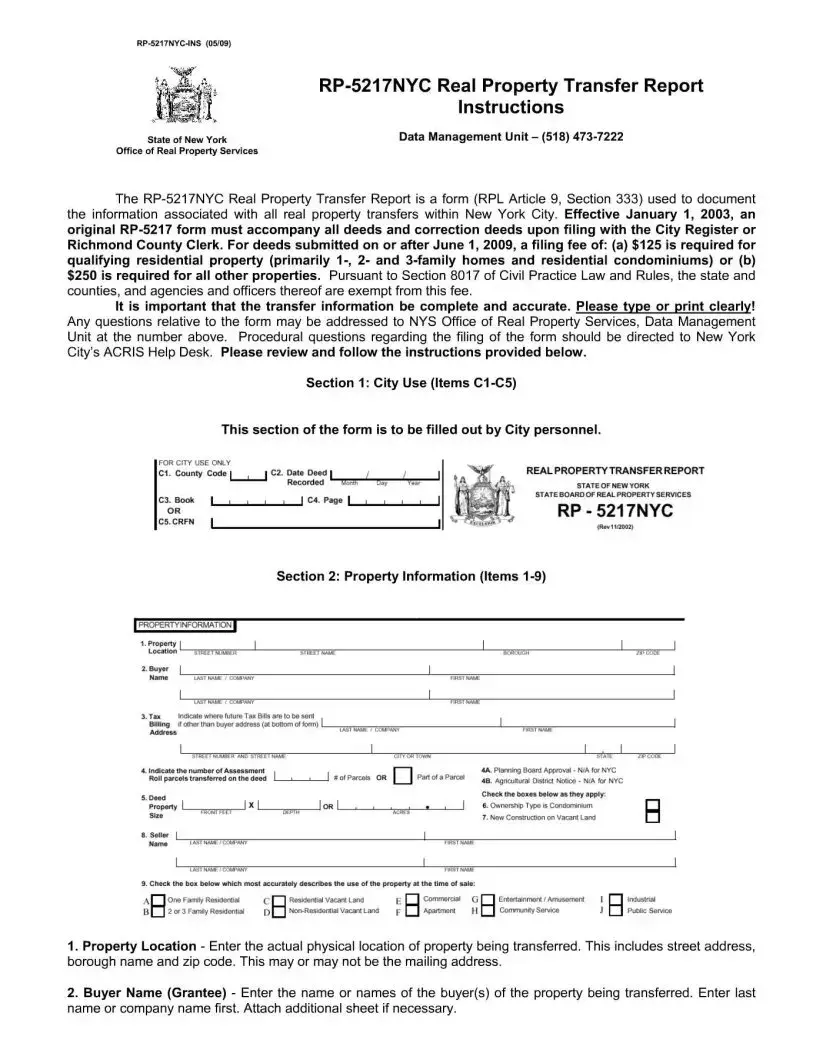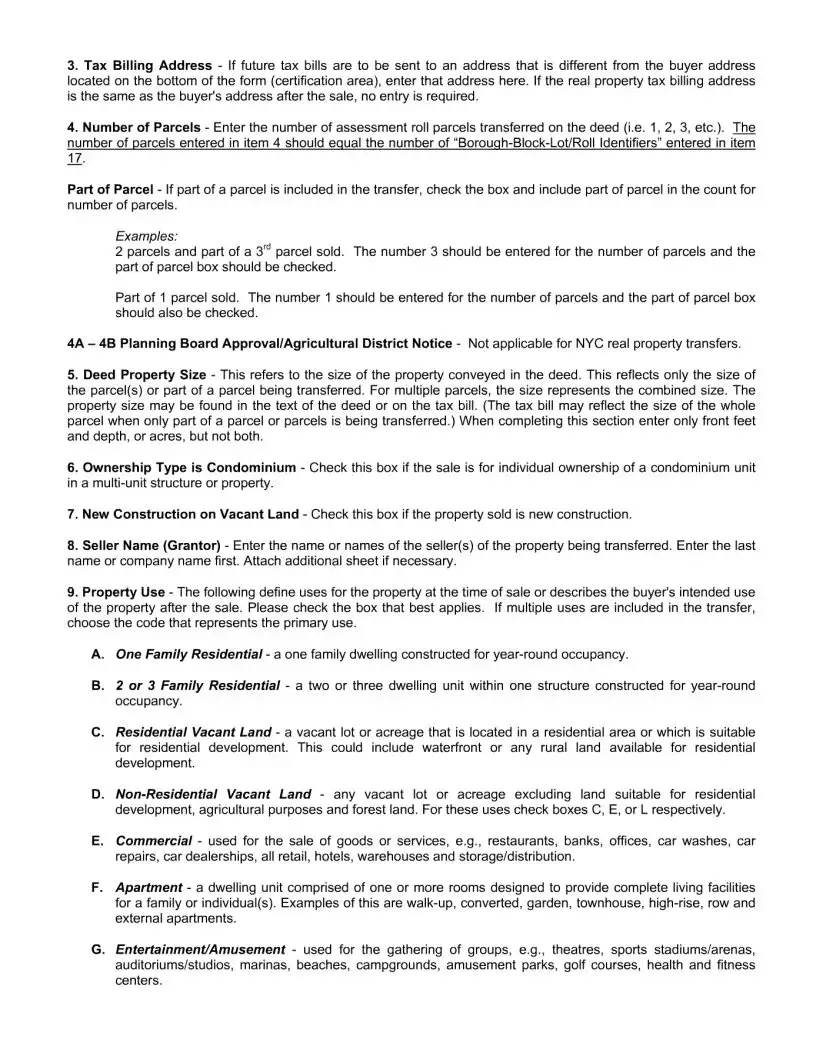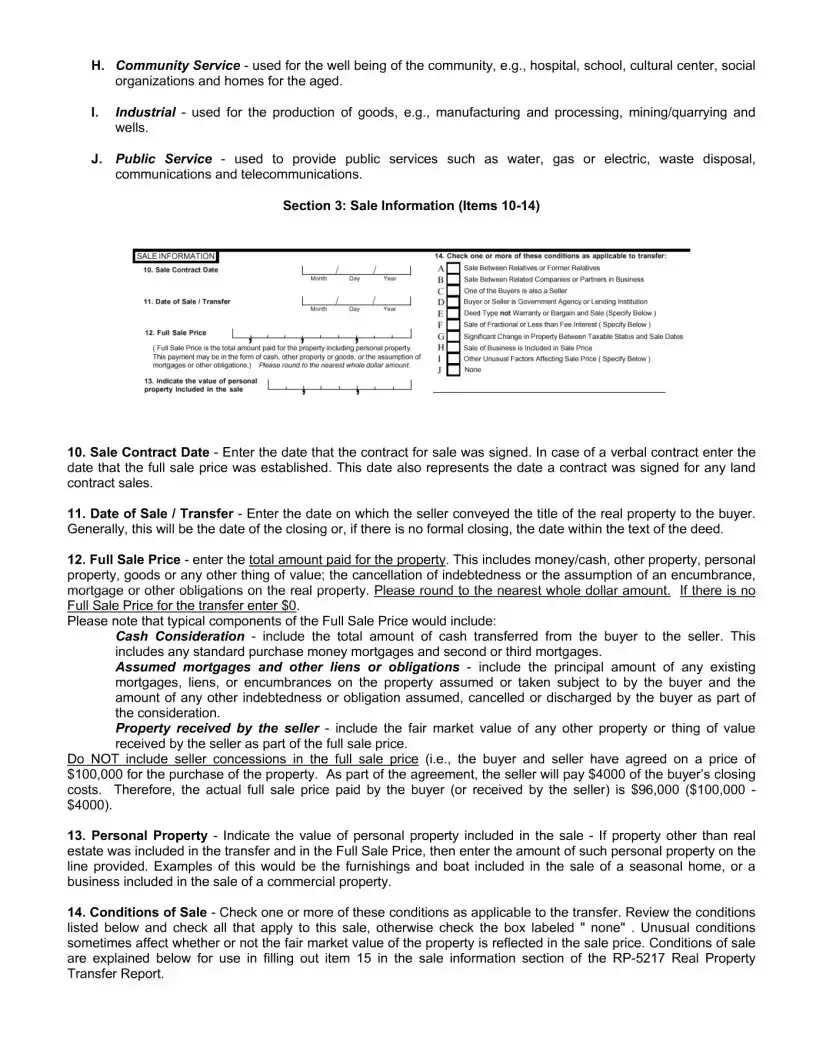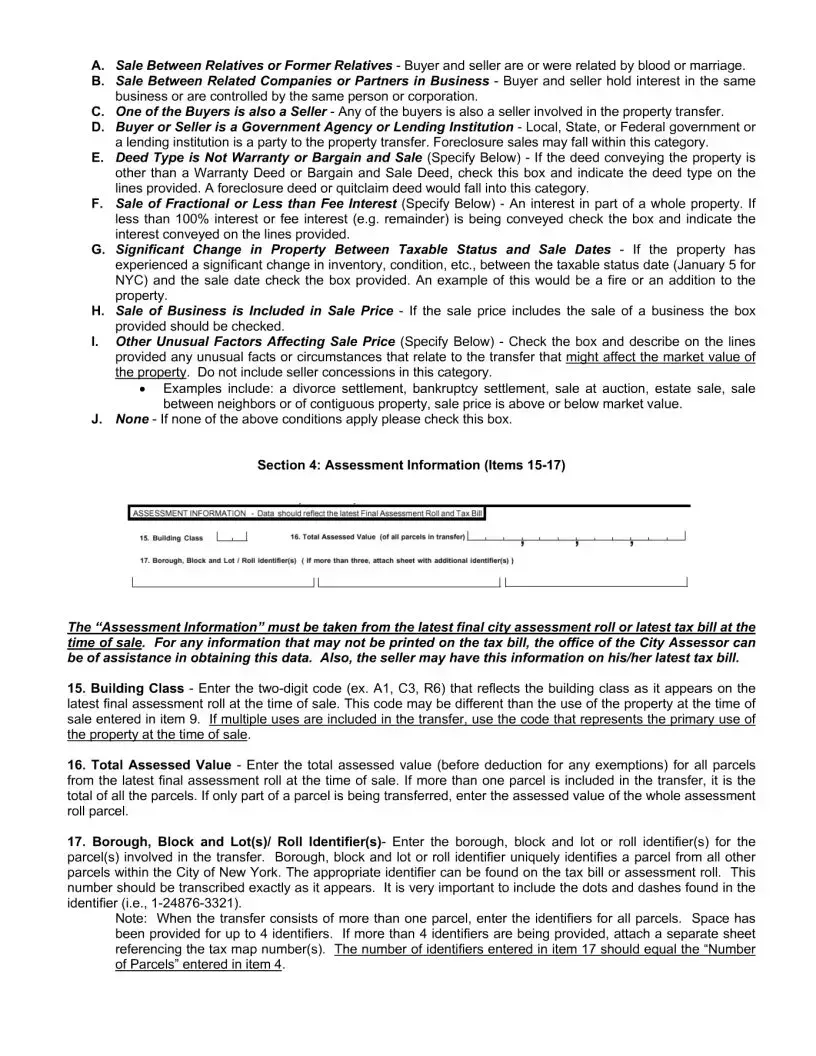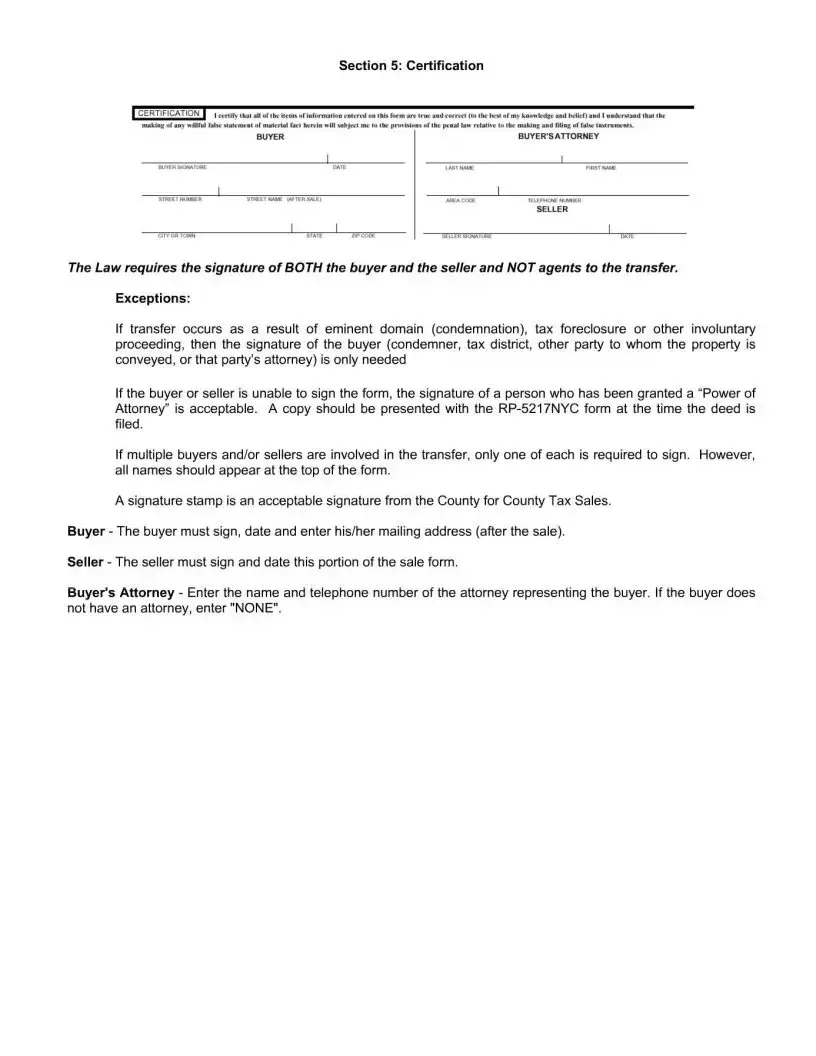When engaged in the sale and purchase of real estate in New York City, individuals and entities face a myriad of paperwork, among which the RP-5217NYC form stands out due to its importance and specificity. This document, a crucial part of the real estate transaction process, serves as a real property transfer report utilized specifically within the confines of the five boroughs of New York City. It is designed to collect detailed information on the transfer of title, including but not limited to the identities of the buyer and seller, the sale price, and the specifics of the property sold. Accuracy in completing this form is not only necessary for the legal transfer of property but also impacts the determination of real estate taxes and fees. The RP-5217NYC form thus plays a significant role in ensuring transparency in real estate transactions, aiding in the assessment for tax purposes, and providing a reliable record for both the city's records and the parties involved. Understanding its nuances is essential for anyone involved in the real estate market within New York City, from lawyers and real estate professionals to buyers and sellers aiming for a smooth transition of property ownership.
